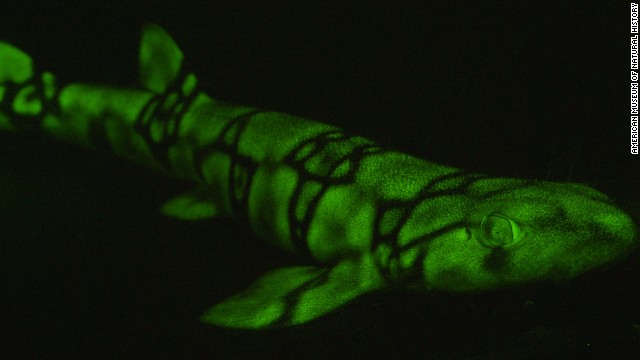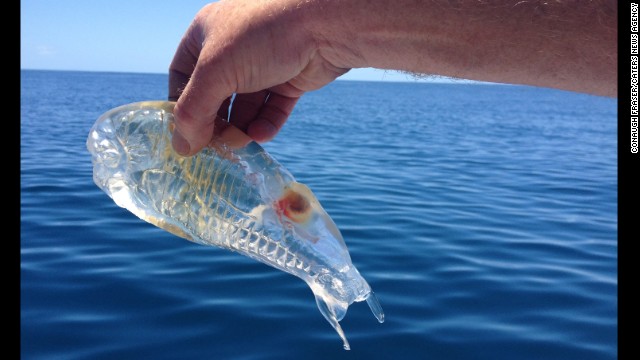If you've ever seen the 1989 movie "The Abyss," you have an idea what I'm talking about.
When Stewart Fraser
spotted the translucent creature floating in the Pacific 40 miles off
the North Island's Karikari Peninsula, he wasn't sure he even wanted on
his boat, he told the UK's Mail Online.
"I was in two minds
whether to haul it in, but curiosity got the better of me and I decided
to take a closer look," he told the Mail. "It was quite something, and
I'd never seen anything like it before."
 Photos: Glowing fish
Photos: Glowing fish
Strange and endangered species
Dennis Gordon, a scientist with New Zealand's NIWA water and atmospheric research agency, told the New Zealand Herald
the see-through creature is a salp, and it's really not that rare.
Salps are found around the world, and often in big numbers, scientists
say. While Fraser pulled up a lone salp, scientists say they have often
been found in chains more than 30 feet long.
And Gordon said some salps reproduce so rapidly that they can double their population in a day.
But obviously, they are
really hard to spot, which protects the salp from other creatures that
would like to make a meal of them, Paul Cox, director of conservation
and communication at the National Marine Aquarium, told the Mail.
"In common with other
defenseless animals that occupy open water -- jellies and hydroids for
example -- the translucence presumably provides some protection from
predation. Being see-through is a pretty good camouflage in water," Cox
said.
Gordon told the Herald
that when they can be caught, scalps are a good food source for some
fish, seals and turtles. They are more nutritious than jellyfish, he
said.
He also said the salps,
which feed by taking in water through internal filters, are important
predators themselves, but not one that any human needs to be afraid of.
"They can eat the
smallest plant plankton and can even eat bacteria, so they can exist in
parts of the ocean where nothing else can live. The significance of that
is they are an intermediary in the food chain,'' the Herald quoted
Gordon as saying.
So what does a rapidly reproducing, filter-feeding, translucent predator feel like?
"Scaly and was quite firm, almost jelly like," Fraser told the Mail.

No comments:
Post a Comment